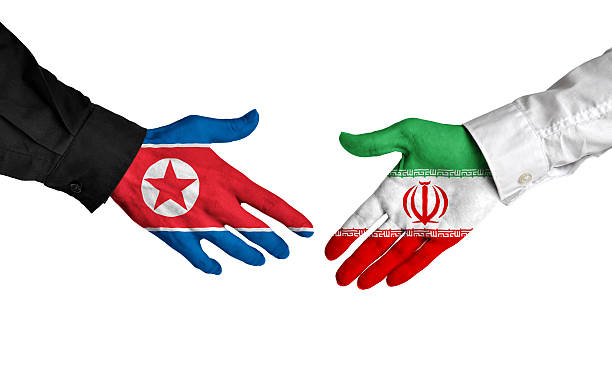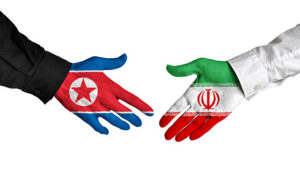
iran and north korea
In the complex landscape of world politics, the term “supreme leader” carries significant weight. This title refers to a political figure who wields considerable power and influence, often above the traditional roles of a president or prime minister. Supreme leaders typically govern in an authoritarian manner, maintaining strict control over the state and its institutions. In this blog, we will explore the meaning of the term “supreme leader,” identify current leaders who hold this title, compare the role of a supreme leader to that of a president, and assess whether such leaders possess excessive power in today’s political climate.
What is a Supreme Leader?
The term “supreme leader” denotes a head of state who holds ultimate authority over a country’s political, military, and religious institutions. Unlike presidents or prime ministers, who may follow a constitution or electoral mandates, supreme leaders often exercise power without significant checks and balances.. This position can encompass both formal and informal authority, allowing these leaders to shape national policies and influence societal norms extensively.
Political systems characterized by authoritarianism often produce supreme leaders, where they limit dissent and suppress opposition parties. They often cultivate a cult of personality, emphasizing their role as the embodiment of the nation’s identity and values. In this context, their power transcends traditional governance, making them key figures in both domestic and international arenas.
Current Supreme Leaders in World Politics
Today, people commonly refer to a handful of leaders as supreme leaders.. Among them, Kim Jong-un, the supreme leader of North Korea, stands out prominently. Since taking office in 2011, Kim has maintained an iron grip on the nation, characterized by military posturing and strict control over the populace.
Another notable supreme leader is Ali Khamenei, the supreme leader of Iran. Holding this position since 1989, Khamenei possesses significant influence over the country’s political and military affairs, including its controversial nuclear program. His authority extends beyond political boundaries, as he is also regarded as a religious figure, guiding the nation’s Islamic ideology.
The Taliban leader, particularly following the group’s return to power in Afghanistan in 2021, has also been classified as a supreme leader. This leadership is marked by a return to strict interpretations of Islamic law, significantly impacting the lives of Afghan citizens.
Supreme Leader vs. President: Key Differences and Similarities
While both supreme leaders and presidents hold significant power within their respective countries, the nature and extent of that power can vary greatly. Here are the primary differences and similarities:
Differences
- Authority and Accountability: A president typically operates within a framework of laws and institutions, often subject to checks and balances. In contrast, a supreme leader enjoys unchecked authority, making unilateral decisions without requiring consensus or approval.
- Role in Government: Presidents often serve as representatives of the people, elected through democratic processes. Supreme leaders, however, may not face electoral challenges and often rely on ideological or military support to maintain their position.
- Institutional Power: While a president might share power with other branches of government, a supreme leader frequently controls all aspects of governance, including the judiciary, military, and religious institutions.
Similarities
- Influence on Policy: Both roles involve significant influence over national policy, although the methods may differ. Supreme leaders often have a more direct approach, implementing policies without the need for legislative approval.
- Symbolic Leadership: Both supreme leaders and presidents serve as symbolic figures for their nations. They represent national identity and often embody the aspirations or ideologies of their respective countries.
- International Relations: Both positions engage in international diplomacy, although a supreme leader may prioritize ideological goals over diplomatic negotiations.
Are Supreme Leaders Too Powerful in Today’s Politics?
The power wielded by supreme leaders raises essential questions about governance, democracy, and human rights. The concentration of power in the hands of a single individual can lead to significant implications for a nation’s political stability, economic development, and societal freedoms.
Authoritarianism and Its Impacts
The unchecked authority of supreme leaders can foster an environment of authoritarianism, where dissent is stifled, and civil liberties are curtailed. In North Korea, for example, Kim Jong-un’s regime has been characterized by severe human rights abuses, including arbitrary detention and severe restrictions on freedom of expression. Similarly, Ali Khamenei’s leadership in Iran has seen crackdowns on protests and dissent, limiting the population’s ability to express differing views.
Regional Stability and Global Relations
Supreme leaders often pursue aggressive foreign policies, which can destabilize regions and lead to international tensions. Kim Jong-un’s nuclear ambitions and Khamenei’s support for proxy groups in the Middle East exemplify how the actions of supreme leaders can have far-reaching implications beyond their borders. These decisions may prioritize nationalistic or ideological goals over peaceful coexistence, resulting in conflicts that affect global security.
Public Sentiment and Resistance
Despite the immense power held by supreme leaders, public sentiment can shift. Instances of dissent and resistance can emerge, often leading to significant upheaval. The Iranian protests in recent years highlight the population’s frustration with authoritarian rule. In North Korea, while dissent is dangerously suppressed, there are signs that the younger generation is becoming increasingly disillusioned with the regime, potentially paving the way for future change.
The Future of Supreme Leadership in World Politics
As global dynamics continue to evolve, the role of supreme leaders may face new challenges. The rise of social media and increased access to information can empower populations, leading to demands for greater accountability and transparency. Additionally, shifting geopolitical alliances may impact how supreme leaders interact with the global community.
While supreme leaders have historically maintained a stronghold on power, the changing landscape of world politics suggests that their dominance may be challenged in the years to come. The call for democracy and human rights continues to resonate worldwide, prompting questions about the sustainability of authoritarian regimes.

Conclusion: The Supreme Leader’s Place in History
In conclusion, the title “supreme leader” represents a unique and often controversial position in world politics. Supreme leaders like Kim Jong-un, Ali Khamenei, and the Taliban leader wield considerable authority, often at the expense of democratic principles and human rights. While their power can lead to stability within their countries, it frequently results in repression and international tensions.
As we look toward the future, it is crucial to question the balance of power and the implications of having individuals in such influential positions. People may liken the position of a supreme leader to a double-edged sword—capable of wielding immense power but also facing the potential for monumental change. The supreme leader is not merely a political title; it embodies an unparalleled authority that can shape nations, ideologies, and history itself.





